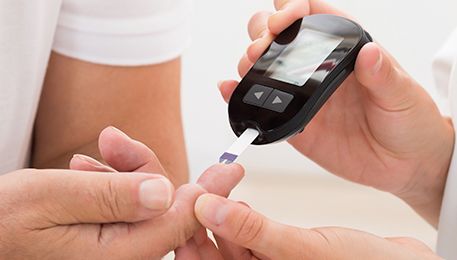Universal Screening for Adults 40-70 Years Old Could Identify Most Diabetes Cases 2 Years Earlier

An analysis of data from the UK Biobank study suggests universal screening programs for type 2 diabetes among middle-aged adults could identify undiagnosed diabetes more than 2 years earlier than routine clinical care.
Using HbA1c measurements from individuals included within the UK Biobank cohort, results of the study indicate 1% of all those without a diabetes diagnosis had undiagnosed diabetes based on their HbA1c at baseline, with further analysis suggesting a screening initiative for adults aged 40-70 years could reduce the time to diagnosis by a median of 2.2 years.
“Our study provides the first population-based estimate of the impact of HbA1c-based screening on reducing the time to diabetes diagnosis. In UK Biobank, 1.0% of those aged 40–70 years had undiagnosed diabetes, and population-level HbA1c screening could have reduced the time to diabetes diagnosis in this group by a median of 2.2 years,” wrote investigators. “Earlier diagnosis would allow earlier intervention with the potential to reduce the risk of diabetes complications, but this requires further evaluation.”
As rates of type 2 diabetes continue to increase across the world, the potential of population-level interventions for early diagnosis and prevention have garnered considerable attention. With this in mind, a team from the University of Exeter launched the current study with the intent of producing the first study to detail how many diabetes diagnoses would be revealed earlier as a result of a population-level diabetes screening program.
As part of the UK Biobank study, individuals underwent clinical examinations at enrollment. Data from these examinations, which included an assessment of HbA1c, were not fed back to participants or clinicians. Of the 502,493 individuals recruited for the UK Biobank study, 466,488 had data related to HbA1c at enrollment. Further limiting their analyses to those with linked primary and secondary healthcare data as well as those without a preexisting diabetes diagnosis, investigators were left with a cohort of 166,846 individuals for inclusion in their analyses.
Using data from this cohort, investigators designed their study to estimate the reduction in time to diabetes diagnosis achieved by HbA1c-based screening among middle-aged adults using data from the UK Biobank cohort. To do so, investigators used Kaplan-Meier analysis to assess time between enrollment HbA1c measurement and subsequent clinical diabetes diagnosis in the next 10 years and to use Cox regression to identify factors associated with delayed diabetes diagnosis. For the purpose of analysis, undiagnosed diabetes was defined as an HbA1c level at or exceeding 6.5% at enrollment.
Of the 166,846 individuals included in the current study, 1703 (1.0%) had an HbA1c level meeting the criteria for undiagnosed diabetes at enrollment, with the mean HbA1c among this group at 6.8% (6.6–7.4). Investigators noted this group of 1703 would represent an additional 13% (95% CI, 12.4-13.6) of diabetes cases in the study population relative to the 13,077 with known diabetes. Compared to those without undiagnosed diabetes, those with undiagnosed diabetes at enrollment were on average older (61.4 [55.1–65.6] vs 60.9 [55.0–65.3] years), had a higher BMI (30.9 vs 30.1 kg/m2; P <.001), were more predominately male (58.0% vs 58.3%), were living in more deprived areas, and were more likely to self-report being of non-white ethnicity (P for all <.001).
Of the 1703 with undiagnosed diabetes at enrollment, 87.7% went on to receive a clinical diagnosis of diabetes during the follow-up period. Upon analysis, investigators found the median time to clinical diagnosis for those with undiagnosed diabetes was 2.2 years, with a median HbA1c at clinical diagnosis of 7.5% (IQR, 6.8-9.5). Investigators pointed out those enrolled in 2010 had a significantly shorter time to diagnosis than those enrolled in 2008 (1.8 years [95% CI 1.4-2.2] vs 2.3 years [95% CI, 2.1-2.6]; HR, 1.22 [95% CI, 1.04, 1.43], P=.017). Further analysis suggested female participants with lower HbA1c and BMI measurements at enrollment experienced the greatest delays to clinical diagnosis.
“Unless diabetes risk scores are improved (especially in the low BMI group), population-based screening with HbA1c is the only way to reliably identify undiagnosed diabetes. However, the cost-effectiveness of this approach merits further assessment and will vary based on the degree of HbA1c testing in the underlying population,” investigators added.
This study, “The impact of population-level HbA1c screening on reducing diabetes diagnostic delay in middle-aged adults: a UK Biobank analysis,” was published in Diabetologia.